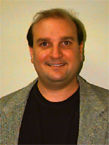Timothy F. Slater
 While I was a graduate teaching assistant in astronomy, I sympathized with students who told me that there were two ways of taking college science classes. One was to learn and understand the material and the other was to get an "A." The students well understood that the most productive strategy for getting a high grade in most introductory science courses involved memorizing the notes from lecture, working enough homework problems so that the proper algorithm could be applied to the corresponding problem on exams, and subsequently forget everything they had temporarily memorized.
While I was a graduate teaching assistant in astronomy, I sympathized with students who told me that there were two ways of taking college science classes. One was to learn and understand the material and the other was to get an "A." The students well understood that the most productive strategy for getting a high grade in most introductory science courses involved memorizing the notes from lecture, working enough homework problems so that the proper algorithm could be applied to the corresponding problem on exams, and subsequently forget everything they had temporarily memorized.
Eventually, I began to understand for myself that I was not going to take a multiple-choice examination to pass my Ph.D. defense anymore than my tenure and promotion as a faculty member would depend on how many facts I had memorized. I realized that what I loved about doing science was DOING science and focusing on the aspects most interesting to me. About that same time, the National Council for Teachers of Mathematics (NCTM) began to extol the virtues of alternative assessments as a way of moving students beyond memorizing procedures and motivating them to understand concepts. I began exploring ways to adopt the procedures already well understood in the performing arts such as music and athletics such as diving, gymnastics, and skating - competitive ice skaters Tonya Harding and Nancy Kerigan were in the news quite often in those days - to the excitement of scientific inquiry. Over the years, I have used performance assessment at a variety of levels of commitment. I now believe that, in the same way that students must actively construct their own knowledge with considerable mental effort, the use of performance assessments emphasizes to students that procedural knowledge and creative problem solving is at least as important as basic factual knowledge.
Tell me more about this technique:

